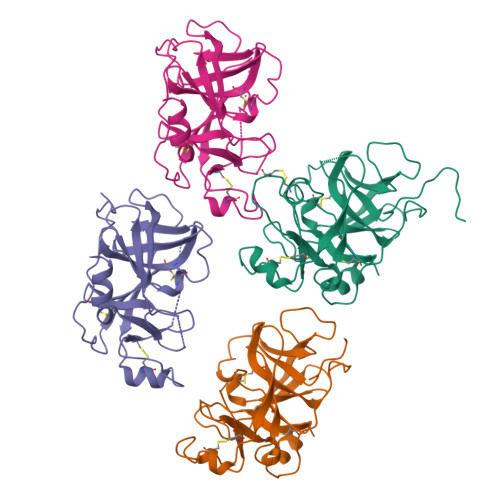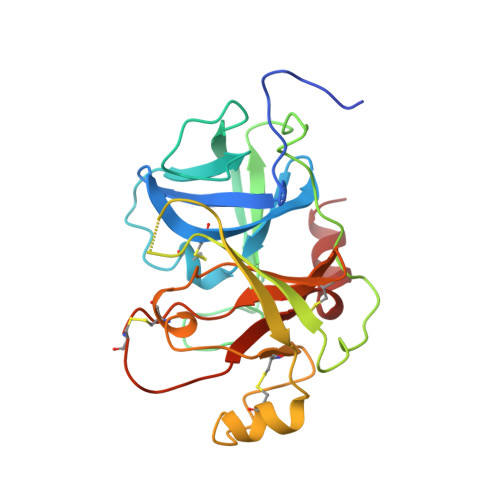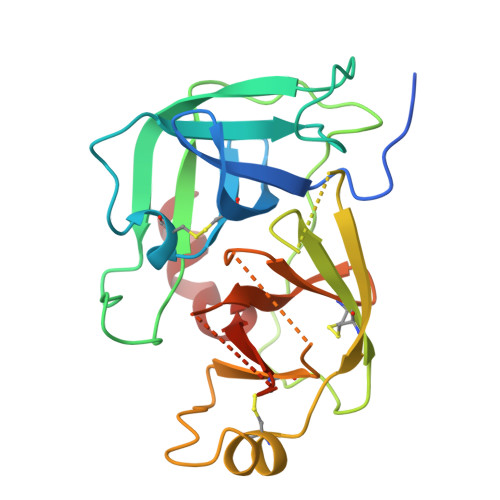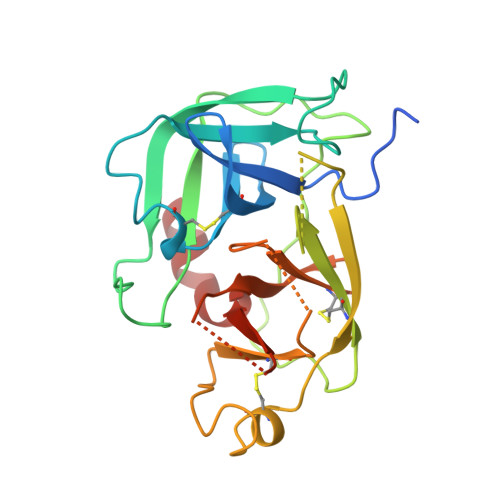Structural basis of profactor D activation: from a highly flexible zymogen to a novel self-inhibited serine protease, complement factor D.
Jing, H., Macon, K.J., Moore, D., DeLucas, L.J., Volanakis, J.E., Narayana, S.V.(1999) EMBO J 18: 804-814
- PubMed: 10022823
- DOI: https://doi.org/10.1093/emboj/18.4.804
- Primary Citation of Related Structures:
1FDP - PubMed Abstract:
The crystal structure of profactor D, determined at 2.1 A resolution with an Rfree and an R-factor of 25.1 and 20.4%, respectively, displays highly flexible or disordered conformation for five regions: N-22, 71-76, 143-152, 187-193 and 215-223. A comparison with the structure of its mature serine protease, complement factor D, revealed major conformational changes in the similar regions. Comparisons with the zymogen-active enzyme pairs of chymotrypsinogen, trypsinogen and prethrombin-2 showed a similar distribution of the flexible regions. However, profactor D is the most flexible of the four, and its mature enzyme displays inactive, self-inhibited active site conformation. Examination of the surface properties of the N-terminus-binding pocket indicates that Ile16 may play the initial positioning role for the N-terminus, and Leu17 probably also helps in inducing the required conformational changes. This process, perhaps shared by most chymotrypsinogen-like zymogens, is followed by a factor D-unique step, the re-orientation of an external Arg218 to an internal position for salt-bridging with Asp189, leading to the generation of the self-inhibited factor D.
Organizational Affiliation:
Division of Clinical Immunology and Rheumatology, University of Alabama at Birmingham, Birmingham, AL 35294, USA.



















